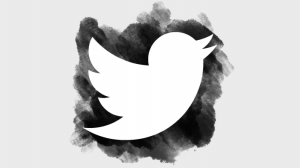After months of hype—and a literal three-hour trailer—Disney+ finally touches down today. It does so with all the trappings of a hit: a competitive price, popular franchises stacked to the ceiling, Forky. Even more important to its inevitable success, though, is what it exhibits few signs of: growing pains.
Athena seems like a hifalutin metaphor for yet another streaming service from a multinational megacorp. But go with it for a second, because it gets at what makes Disney+ singular more than the ever-expanding Star Wars universe ever could. It’s that Disney+ is bursting into existence fully formed, straight from the noggin of Disney CEO Bob Iger.
It’s hard to overstate the advantage this gives Disney over fellow newcomers like Apple TV+ and the forthcoming HBO Max. And it’s important to understand that Disney’s head start comes not only from its extensive back catalog of TV shows and movies but also from a technological prowess in this space that that few companies can match.
World Builders
Start with the fun part. At launch, Disney+ will bring to bear the full power of not just Mickey and friends but Marvel, Pixar, and Star Wars, along with a heaping helping of Fox and National Geographic. It’ll have fewer total hours of stuff to watch than Netflix does, but also substantially less filler.
More importantly, it can offer most of those movies and TV shows from day one, including franchises with shelf lives that are measured in the decades. (A few exceptions, like Mary Poppins Returns, are tied up with licensing agreements elsewhere, but will make it over the transom eventually.) That means Disney+ will enter the market at $7 per month with confirmed hits, rather than plodding through years of trial and error to find a show or two that sticks.
Compare that to Apple TV+, which launched less than two weeks ago with a relatively paltry nine series—most of which launched to decidedly mixed reviews. That’s not a knock on Apple, which is both starting from scratch and effectively giving its streaming service away to anyone who buys one of its devices; it’s like getting a branded koozie along with a large appliance purchase. But it does speak to all the trouble Disney doesn’t have to go through to build out its stable.
“Disney knows it has an audience,” says Dan Rayburn, a streaming media analyst with Frost and Sullivan. “Apple’s never been known for content, because they’ve never been in that space. So it’s much more difficult for them to find an audience and say, ‘What does my audience want to watch, what do they want to see?’”
That process can take years. Just ask Netflix or Amazon. The former relied on licensing outside content for years—most notably from Starz, which sent Netflix subscribers reeling when it pulled out of the deal in 2011—before finally striking oil with House of Cards two years later. But even now, Netflix is spending an estimated $15 billion on original content this year alone, in search of the next big hit. To build up its arsenal, Amazon spent its early years asking Prime members to vote on which TV show pilots they wanted to see more of.
For better or worse—don’t expect to see as many creative risks coming from the Mouse House content laboratories—Disney+ will skip those formative years altogether. It will launch with instantly recognizable, universally beloved movies and shows. (Along with plenty that are … less so.) Because it owns all of that intellectual property, it can show them all over the world without navigating the thickets of local licensing agreements Netflix still contends with regularly. And as Disney continues fills out its library with new projects, it knows full well who its customers are and what they like. It’s been at this game for nearly a century.
In the long run, that could place a cap on Disney’s streaming appeal. “Disney+ is not going to be a generalist service like Netflix or, to some extent, even Amazon,” says Tony Gunnarsson, streaming media analyst at Ovum. “It will be Disney titles only. I think that will be the most important thing to bear in mind.”
Still, “Disney titles only” is miles ahead of where any other streaming service started. Not to mention that Disney knows how to get them to you without a hiccup.
BAM I Am
Having hours of highly watchable stuff isn’t enough. As anyone who’s struggled to stream Game of Thrones knows, the infrastructure that gets those shows to paying customers is every bit as important.
Disney knows that too, and better than you might think. In 2017, it put down $1.58 billion to gain a majority stake in BAMTech, a company that grew out of Major League Baseball Advanced Media in the early aughts. Without getting into a deep history of online streaming infrastructure, know that BAMTech is the gold standard, for years supporting everything from Major League Baseball to WWE to Disney-owned Hulu. Last year, Disney renamed BAMTech internally as Disney Streaming Services.
Throughout its various iterations, BAMTech has proven itself unflappable. The unpredictable popularity of baseball games taught it how to balance loads and handle usage spikes. Its work streaming those games to the MLB.tv app as early as 2009 means it’s logged more years of service delivering video to iOS devices than just about anybody. (Netflix’s iOS app launched in 2010.)
The actual Disney+ launch could still have issues. Having BAMTech on board, though, gives Disney the best possible chance at pulling it off without a hitch. It’s an advantage that another looming competitor—AT&T-owned HBO Max, which can almost rival Disney+ for sheer size—very notably lacks. To pull off its streaming ambitions, AT&T needs to somehow bring its disparate properties at HBO, CNN, TBS, TNT, Cartoon Network, Adult Swim, Warner Bros., and more onto one shared platform.
“That is an enormous undertaking that none of these companies in their history have ever done at the size and scale that we’re talking, at a time when digital is critical,” says Rayburn. “That is what scares the hell out of all of these companies moving forward, except Disney. And the reason for that is they bought the company that has the most expertise in this space.”
That expertise extends beyond the nuts and bolts of pushing encoded video across various pipes. BAMTech can handle credit cards and authentication and subscriptions and all of the other unglamorous aspects that make streaming services actually run. It even knows how to sell tickets, thanks to its MLB roots.
“Disney has a huge advantage over everybody because of the expertise of BAMTech,” says Rayburn, especially when it comes to relatively new entrants. Netflix may have every bit as sophisticated a backend, but it took years to build out.
That’s the real story of Disney+, and the reason it deserves more attention than some of its fellow flashy upstarts. This may be its first day, but it’s got one hell of a head start.
Note: When you buy something using the retail links in our stories, we may earn a small affiliate commission. Read more about how this works.
More Great WIRED Stories
- The super-optimized dirt that helps keep racehorses safe
- The 12 best foreign horror movies you can stream right now
- VSCO girls are just banal Victorian archetypes
- Google’s .new shortcuts are here to simplify your life
- The delicate ethics of using facial recognition in schools
- 👁 Prepare for the deepfake era of video; plus, check out the latest news on AI
- 💻 Upgrade your work game with our Gear team’s favorite laptops, keyboards, typing alternatives, and noise-canceling headphones



